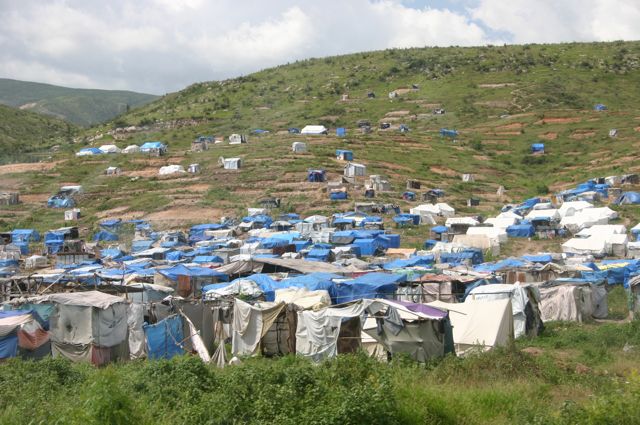
Tents outside Port-au-Prince for those displaced by the earthquake.
In some ways it seems like yesterday and in other ways it seems like an eternity ago. But it was one year ago today – Jan. 12, 2010 – that the world watched in shock as Haiti was devastated by a 7.0-earthquake.
Buildings toppled, thousands of people were killed, and even more were injured and needing help. Some 1 million people were left homeless and many of those people are still living in tents, struggling to get by each day.
Volunteers with Haiti Foundation of Hope have been working since the days after the earthquake to give assistance and offer encouragement. That work continues.
In the next two months, we will be sending more medical teams to work at the Clinic of Hope in northern Haiti. And we are still supporting ongoing programs like community health, education and clean water. We know that our Haitian partners have been working tirelessly this past year and we are thankful for their example and dedication.
We don’t take lightly our name: Haiti Foundation of Hope. Sometimes it’s difficult to see hope and this past year in Haiti would be one of those times. But we know it’s there each and every day.
We see it in the excitement and nervousness of volunteers who travel to Haiti for the first time. We see it in the handshakes and hugs of returning volunteers who are reunited with their Haitian co-workers. We see it in the distribution of beans and rice, in the smile of a new mother after a safe delivery, and we hear it in the laughter of healthy children.
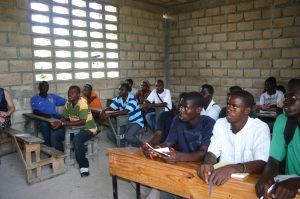
Secondary school students.
We watch it in the school cafeteria as students eat what for some is their only meal of the day. Hope lives in the eagerness and future of those students as they study and pass exams.
Hope is there in the classroom as young women learn trade skills like sewing and cooking. Hope travels with the community health volunteers as they go from home to home, checking on their neighbors. And we know hope exists inside and outside of the church walls of Terre Blanche.
Thank you to all who have supported Haiti this past year. Your gifts, contributions and prayers have been another source of hope. However, the struggle is not over and there is a long road ahead. Please consider how you might continue to support Haiti Foundation of Hope and those we serve.
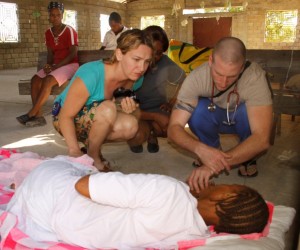 After you have seen it once, the diagnosis of cholera seems possible in the eyes alone. The afflicted stare into the miasma, their eyes literally sunk into their skulls, eyes that portray panic or resignation depending on the progression of the disease. Cholera is horrifying in speed and viciousness, and it is certainly inflicting that fear on the people of Terre Blanche, Haiti.
After you have seen it once, the diagnosis of cholera seems possible in the eyes alone. The afflicted stare into the miasma, their eyes literally sunk into their skulls, eyes that portray panic or resignation depending on the progression of the disease. Cholera is horrifying in speed and viciousness, and it is certainly inflicting that fear on the people of Terre Blanche, Haiti.
One such patient was brought into the clinic courtyard during morning devotions on a door her family used as a stretcher…
Read more of this story and other cholera facts in the Haiti Foundation of Hope December newsletter.
Also in this month’s newsletter…
The Clinic of Hope has outgrown its space since it opened its doors in 2007 and now construction has started on an addition to the clinic building. Learn more about the project.
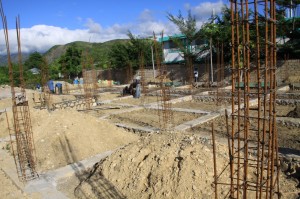 During this season of thanksgiving, we are grateful to be part of another project unfolding in Terre Blanche, Haiti: the construction of an addition to the Clinic of Hope.
During this season of thanksgiving, we are grateful to be part of another project unfolding in Terre Blanche, Haiti: the construction of an addition to the Clinic of Hope.
Currently, the foundation is being built, with all the construction being done by Haitian workers.
The clinic first opened its doors in February 2007, providing consistent health care in the community for the first time. Today, the clinic is staffed year-round by Haitian medical personnel and hosts visiting medical teams from the United States.
After the earthquake in January, we realized we were seeing sicker and more complicated cases at the Clinic of Hope. Some patients needed to be observed overnight or longer.
Haiti Foundation of Hope recently broke ground on an addition to the clinic building. Once completed, the space will provide a place to keep patients overnight rather than placing them in makeshift or temporary locations. During the recent cholera outbreak, some patients were being treated in the church across the street from the clinic.
The new space will also allow for more room for minor surgeries, newborn deliveries, a community health office, and a resting place before critical patients are transported to other medical facilities.
We’re excited about seeing the completion of the clinic addition and the extra space that it will provide as we continue to serve the people in Terre Blanche.
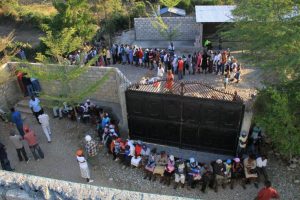
Outside the clinic.
Written by Dr. Joe Markee, one of the team leaders for the November medical team working in Haiti:
As we start our last day, we are facing a situation we’ve never encountered. Over the past several days, we have been seeing sicker patients, with a sudden increase in the number of cases of cholera. Since many patients are coming from Port-au-Prince, this may represent the patients’ impetus to seek care wherever they can find it. But it does not change the conclusion the that cholera epidemic has destroyed the fragile network that we use for transferring patients needing hospitalization for further medical care.
Our pediatrician commented last night that he is not used to the pace of caring for so many extremely ill patients (he is also an ER doctor). Case in point: We have a 1-year-old patient who probably has an intestinal obstruction. We first saw him two days ago, and we wanted to send him to Dessalines but could not do so because of the danger of sending our vehicles out at night. Yesterday, when he did arrive at their hospital, we were told they could not keep him because they had no surgeon. Calls to find a surgeon were made but without success so he spent a second night with us. Today, we will try Gros Morne again, and we’re praying that he will be able to be seen by a surgical team coming in on Saturday to work near Port-au-Prince.
Our nurses say this is the worst they have ever seen in this area; so many sick patients. The observation room is filled, patients are lying on the floor in the clinic in almost all of the rooms, and several very sick cholera patients are on IVs in the church across the street. We are running through so many IV solutions that we expect to be completely out sometime today. Yesterday we requested more fluids from Gonaives but won’t know until noon if they are available. So rounds now consists of seeing patients in three locations, making sure IVs don’t run out.
If that wasn’t enough, yesterday we had two trauma cases, one being one of the leaders of our community health program. Fortunately, neither had major life-threatening injuries. Nevertheless, they were sent to hospital facilities, and seen here again today.
Fear is rampant in the country. Our partners in Haiti have had to scour the countryside for rice and beans for our patients because of the hoarding by the population.
But we are healthy, tired and still going … We do not think the cholera epidemic is about to go way any time soon. I have no doubt that we will be dealing with this disaster on future teams.
Pray for the people of Haiti.
Papa Joe
Written by Dr. Joe Markee, who is with the medical team currently working in Haiti:
Often when we arrive, we see a “backlog” of patients who seem to waiting for our return. We have been holding clinic daily since Thursday so the usual “Monday crush” of urgent patients was spread over the last four days. Nevertheless, we have seen a number of neglected cases such as severe abscesses and infections (malaria, typhoid fever but, surprisingly, not many cases of cholera).
Often patients tell us that they have not been able to see doctors because “mwen pa gen kob” (I don’t have money to go to the doctor). This shows, I feel, that they know they can be seen in our clinic whether or not they can pay.
The other striking finding is the fact that many patients have been waiting to be seen without having eaten, often for several days. Every surgical case we have done has been on patients who do not have enough money even to feed themselves for several days before they come to the clinic (not to mention their family). It was such a joy to see our kitchen staff bring food to the patients and their families last at night after we finished surgery.
Thanks to the wonderful benefactors who have supplied the funds for rice and beans for the patients at the Clinic of Hope. More than ever, in the midst of a hurricane, this has been a life-saving gift.
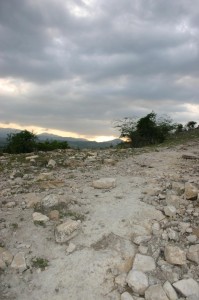 Our November medical team has been working at the Clinic of Hope in northern Haiti as Hurricane Tomas passed by the country this week, bringing lots of rain and wind. The team is safe and continues to see patients. There doesn’t appear to be any damage in the area where the clinic is located, however, there is a lot of flooding in the nearby city of Gonaives.
Our November medical team has been working at the Clinic of Hope in northern Haiti as Hurricane Tomas passed by the country this week, bringing lots of rain and wind. The team is safe and continues to see patients. There doesn’t appear to be any damage in the area where the clinic is located, however, there is a lot of flooding in the nearby city of Gonaives.
The team has also found themselves dealing with the cholera epidemic that has recently developed in Haiti.
Here is a report from Linda Markee, one of the team leaders:
Yesterday (Thursday) was a day of preparation for Hurricane Tomas. The government announced all schools were to be closed Thursday and Friday. (Of course many children in our school – located on the same compound as the clinic – had not gotten the message and there were several hundred at school. They were sent home after lunch.) People bought almost all the rice and beans in Gonaives, so we are thankful that rice for the clinic and the school was purchased last Monday.
Last night we made the clinic ready for the hurricane. We secured the windows and took everything off the roof. Thankfully, one of the team members remembered the solar panels so he and others brought them off the roof also.
When we got up Friday morning there was still no rain, but everyone was waiting. The sky was overcast. A few families came into the school compound to “live.” We did see patients Friday morning and early afternoon. By late afternoon it had started to rain with force! We just stood on the deck over the front entrance to the clinic and could see the road in front of the clinic had turned into a river. Several animals were running by … a goat jumped up into the new waiting area. The two kids playing there finally chased off the goat. You could also hear animals “crying.”
In the midst of all of this we are dealing with the cholera epidemic. When I was home I had the impression from the news that it was subsiding and had not reached Gonaives, but this is not so.
After arriving in Haiti, we were told that the government has a policy that includes all cholera patients in this area be sent to either Gonaives or Gros Morne. They do not want local clinics to keep these patients. The Haitian staff at the Clinic of Hope decided that we Americans were not to take care of the cholera patients. The Haitian workers are screening patients before they enter the clinic and if cholera is suspected they are sent across the street to the church, where Haitian medical staff will see them and give treatment before transporting them to Gonaives or Gros Morne … Needless to say, it is a tough time.
Several team members went to Gros Morne yesterday. There have been a total of 250 cholera patients in their cholera ward, with 5 deaths. The day before they admitted 30 new cases (the largest number in one day). However, the doctor there feels that there are many people far away with cholera who just cannot make it to the clinic and they are dying without getting into the “statistics.”
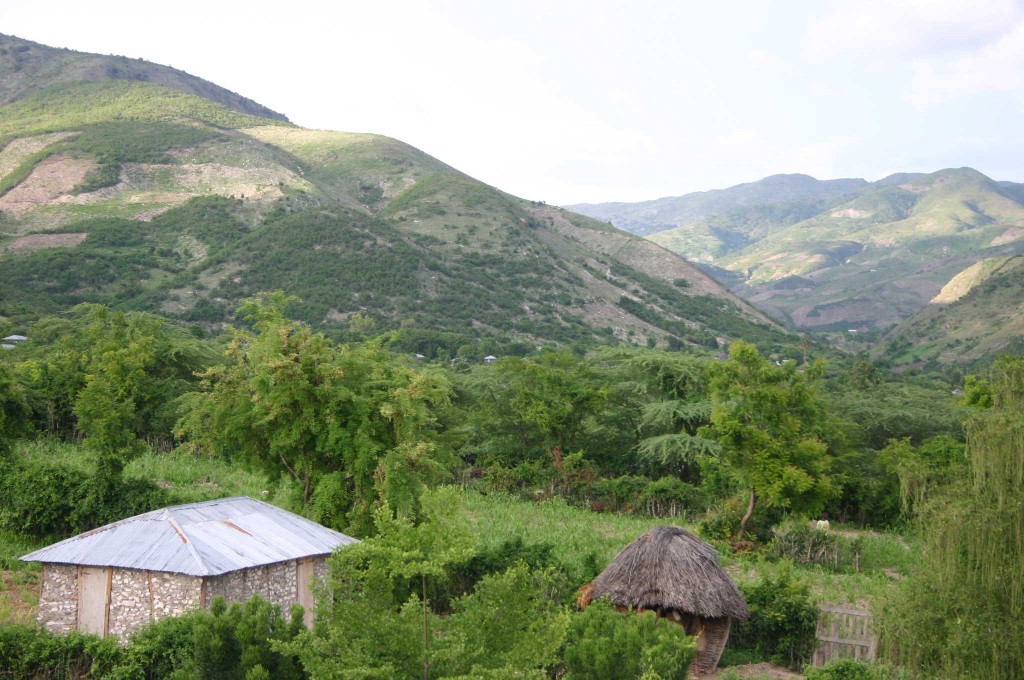 One by one patients are being cared for inside the Clinic of Hope. Outside, it’s raining. The thunder has passed but the clouds are hanging around and the rain is turning the courtyard into mud. The crowds of people waiting to get into the clinic or waiting for their medicine are huddled under tin-roof shelters. Nobody wants to walk home in the mud, wind and rain. It’s inconvenient. But the rain here is good.
One by one patients are being cared for inside the Clinic of Hope. Outside, it’s raining. The thunder has passed but the clouds are hanging around and the rain is turning the courtyard into mud. The crowds of people waiting to get into the clinic or waiting for their medicine are huddled under tin-roof shelters. Nobody wants to walk home in the mud, wind and rain. It’s inconvenient. But the rain here is good.
The rain around the clinic is good for the community. It’s good for the farmers. It’s good for parents trying to provide food for their children. This rural area of northern Haiti is made up of people trying to grow crops in small gardens. There are no other sources of employment. And the past two years have been difficult. In 2008 hurricanes and floods destroyed crops and since then drought has ruined further plantings.
Right now the hillsides around the clinic are green. Millet is growing in gardens and water is flowing in the river. As one women said while huddled under the cover outside the clinic: The rain is good for the gardens even if it makes it difficult for the people.
It’s the rainy season and it’s raining. That’s a good thing here in northern Haiti.
Report from Haiti:
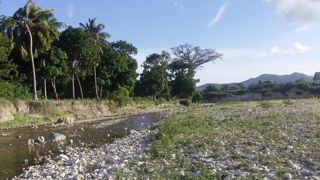 The June medical team has arrived safely in Haiti. Our travels went smoothly and we arrived at the Clinic of Hope on Friday evening in time for a delicious Haitian meal. Saturday was spent setting up the clinic and settling into our home for the next week.
The June medical team has arrived safely in Haiti. Our travels went smoothly and we arrived at the Clinic of Hope on Friday evening in time for a delicious Haitian meal. Saturday was spent setting up the clinic and settling into our home for the next week.
Today we woke to the sound of music coming from the church across the road. After breakfast – and a walk for the early risers on the team – we went to church. We’re now taking a “kabicha” (noontime break) before we start clinic. Patients are already lined up and waiting for us.
Thank you to everyone who is keeping us in their thoughts and prayers this week.

 Instagram Feed
Instagram Feed